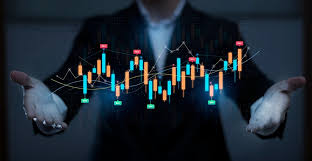
Effective Strategies for Trading Gold in Forex Markets
Trading gold in the forex markets can be a highly rewarding endeavor but also poses significant risks. With the right strategies, traders can navigate the complexities of this precious metal’s trading environment. In this article, we will explore the essential aspects of trading gold in forex, including market analysis techniques, trading strategies, and important considerations for success. For those interested in enhancing their trading experience, consider checking out trading gold forex Platform Forex, a valuable resource for traders.
Understanding Gold as a Commodity
Gold is traditionally viewed as a safe-haven asset, particularly during times of economic uncertainty or geopolitical instability. Its value tends to rise when other assets are underperforming. This makes gold a favored choice among conservative investors. Furthermore, gold can serve as a hedge against inflation and currency devaluation, solidifying its role as a critical asset in any trading strategy.
Analyzing the Gold Market
Before trading gold, it’s essential to conduct a thorough analysis of the market. There are two main types of analysis that traders typically use: fundamental analysis and technical analysis.
Fundamental Analysis
Fundamental analysis involves examining economic indicators, market news, and geopolitical events that can affect gold prices. Key indicators include:
- Interest Rates: Lower interest rates increase the appeal of gold as the opportunity cost of holding gold decreases.
- Inflation Data: Rising inflation often leads to increased gold demand as a hedge against currency depreciation.
- Geopolitical Stability: Events such as wars, elections, and economic crises can prompt investors to flock to gold for safety.
Technical Analysis
Technical analysis focuses on the price movements and trading volumes of gold. Traders use various tools such as:
- Charts: Understanding patterns and trends through candlestick charts, line charts, and bar charts can give insight into future price movements.
- Indicators: Common indicators like Moving Averages, Relative Strength Index (RSI), and Bollinger Bands help in identifying potential entry and exit points.
- Support and Resistance Levels: Identifying levels where the price tends to bounce back can be crucial in determining ideal trade timings.
Developing a Trading Strategy
A well-thought-out strategy is paramount for successful trading in any market, and gold is no exception. Here are several popular strategies for trading gold in forex markets:
Scalping

Scalping involves taking advantage of small price fluctuations. Traders establish a position and hold it for a very short time, often only minutes. This strategy requires quick decision-making, precise entry, and exit points, and relying heavily on technical analysis to capitalize on minute changes in price.
Day Trading
Day trading entails buying and selling gold within the same trading day. Traders will close all positions before the market closes to avoid overnight risks. This strategy requires constant monitoring of the market and a good understanding of both technical and fundamental analysis to make informed decisions throughout the day.
Position Trading
Position trading is more suited for long-term investors who wish to hold their gold investments for an extended period. This approach focuses more on fundamental analysis and broader market trends. Traders employing this strategy usually set stop-loss orders to manage risk and protect their capital against sudden market downturns.
Risk Management in Gold Trading
Like any trading venture, risk management is vital in trading gold. Here are several key risk management strategies:
- Position Sizing: Determine the size of your trades relative to your overall trading capital. A general rule is to risk a small percentage of your capital on any single trade.
- Stop-Loss Orders: Always use stop-loss orders to limit potential losses on any given trade.
- Diversification: Avoid putting all your eggs in one basket. Diversified trades can help mitigate risks and stabilize returns over time.
Choosing the Right Trading Platform
Selecting the right trading platform is critical for a successful gold trading experience. Look for platforms that offer:
- Competitive Spreads: Lower spreads improve profitability by reducing trading costs.
- User-Friendly Interface: An intuitive platform ensures that you can quickly execute trades and access necessary tools.
- Educational Resources: Platforms that offer educational materials and market analysis can enhance your trading knowledge and skills.
Conclusion
Trading gold in the forex markets can be both lucrative and challenging. By understanding the underlying factors influencing gold prices, employing tested trading strategies, and managing your risks effectively, you can position yourself for success. With the right approach and resources, including platforms like Platform Forex, you can enhance your trading experience and improve your chances of making profitable trades in the gold market.
Remember that all trading involves risks, and it’s essential to conduct thorough research and possibly consult with financial advisors before making significant trading decisions. Good luck and happy trading!